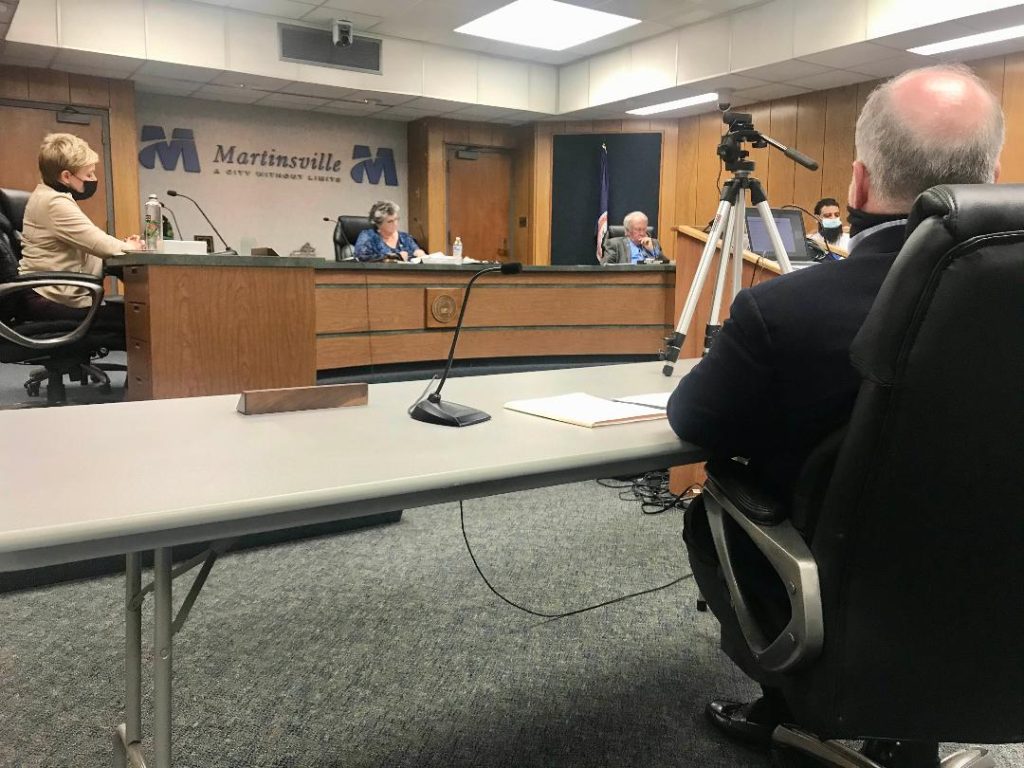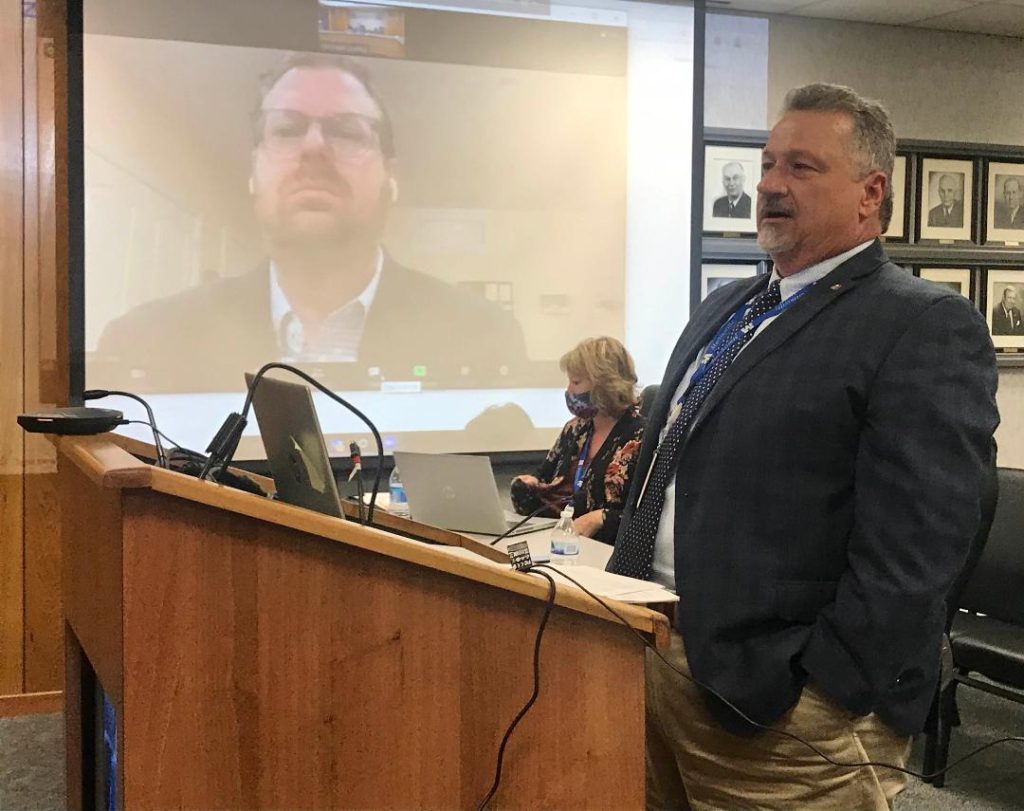
By Brandon Martin
While the city’s reversion legal team projects “modest” or “inconsequential” tax increases under a town status, data provided by the Commissioner of Revenue Ruth Easely suggests a higher tax burden for both town and county residents.
During a Jan. 26 meeting, city council received a brief from Stephen Piepgrass, of the city’s litigation counsel Troutman Pepper, in which he discussed the tax implications of a city reversion.
“In general, tax rates would remain about the same. There may be modest increases but most of those are inconsequential,” Piepgrass said. “With respect to the property tax, the auditors projected that Martinsville residents would see a 60.5 percent decrease in real property tax. That 60.5 percent would be made up with the Henry County tax, resulting in no change.”
According to data provided by Easley, this wouldn’t be the case.

Localities each receive a share of the Commonwealth’s annual $950 million personal property tax relief based on the effective rate of the respective locality as of July 1, 1997. At the time, the effective rate in the city was $1.92 for every $100 of assessed value. This equates to an annual relief allocation of $626,428. If the city wishes to continue to receive this relief, the newly formed town would have to keep collecting a personal property tax.
The proposed rate given by the firm on Dec. 19, 2019 was $0.75 per $100 of assessed value. To receive 100 percent relief on the first $20,000 of assessed value for qualifying vehicles, this rate cannot fall below $1.0583 per $100.
The current city tax rate is $2.30 per $100 of assessed value and the current county tax rate is $1.55 per $100. For a qualifying Toyota Camry, the 2020 total tax after relief was $53.29 for city residents and $43.58 for county residents.
After reversion, town residents would pay both the county rate ($1.55) and the town rate ($1.0583). Provided the resident’s vehicle qualifies, they would receive 100 percent relief for the town tax, but their total tax after relief would still increase by $0.69 because of the county tax rate, even though it is technically lower than the previous city rate.
This is a by-product of adding Martinsville’s fleet of cars to that of Henry County. Combining the two would drop the county’s relief from 38.51 percent to 23.83 percent. The county’s tax after relief would also increase from $43.58 to $53.98.
Town residents with vehicles over $20,000 would also have to pay both locality taxes, meaning a $14 increase compared to taxes of as a city resident. Owners of non-qualifying vehicles such as RVs, campers, boats, and trailers would similarly pay full property tax in both localities as a town resident which would be a 13.4 percent increase.
The data provided by Easely also indicates that business property tax will increase for businesses in the town.
According to Easely, the 2019 study didn’t account for the difference between the business depreciation schedules of the two localities. While the city has a higher tax rate, it also depreciates business property over a longer period and has a lower residual value for older property still in use by the business. This leads to a lower tax bill for businesses that keep their property for a long time. Whereas business and computer equipment stop depreciating at 57 percent in the fifth year for the county, they continue to drop to 25 percent and 5 percent, respectively in the city.
In examples provided by Easley, a business that relocated to the city due to the depreciation rate could see a tax increase of $497.45. A city manufacturer could have a tax increase of $21,980.63 and a city restaurant could have a tax increase of $2,211.20.
The real estate tax for town residents would remain relatively the same, according to Easely.
While the city’s consultants suggested a “revenue neutral” tax rate of $0.04571/$100 as a town, it also requires a $0.605 increase to the county tax rate. The county has indicated that they would need an increase of $0.63/$100 to cover expenditures brought about by reversion. This would mean a 13.5 percent tax increase for county residents.
Piepgrass said that the proposed rates are not set-in stone.
“With respect to tax rates, and again, this is an issue that I know is currently subject to study and negotiation,” he said. “The county may have different views on that and that’s something that would be addressed in litigation and negotiations.”
Another point of contention between the localities are the many revenue-sharing agreements between the two.
“We have paid millions of dollars for our fair share of economic development,” said Council Member Danny Turner. “We gave $1.7 million for Commonwealth Crossing and we’ve just constantly pumped money into the Patriot Centre and never got a dime back for anything yet. Is it the county’s position that we have to void that?”
Piepgrass said that the county requested that the revenue sharing agreements become void in the Commission on Local Government proceedings.
“Whether they mean what they say is a different question and obviously subject to further litigation and negotiation,” Piepgrass said.
City Attorney Eric Monday added “it’s our position that there is no basis in law for the three-judge panel to be able to void an existing contract.”
In other matters presented, city council:
*Conducted a public hearing on the Community Development Block Grant application for the Pine Hall Road area.
*Read a proclamation acknowledging February 2021 as Black History Month.
*Heard an update on the city being selected for a pilot program to work through newly established benchmarks for resilience. The city has been working through benchmarks in buildings, housing, and water since October 2020, according to Kris Bridges, building official for the city. He said staff is a third of the way through the process. The three areas will be rated as essential, enhanced, or exceptional. Bridges said the city could be the first to receive a Community Resilience rating which would be beneficial for economic development.
*Heard an update on Telecommunications Director Mike Scaffidi. The MiNet “Wireless to the Home” initiative is now serving 46 underserved school children with 45 others pending verification from landlords. Additionally, 65 other city residents and eight small businesses are awaiting connection services.
*Heard a summary of the quarterly finance report.



